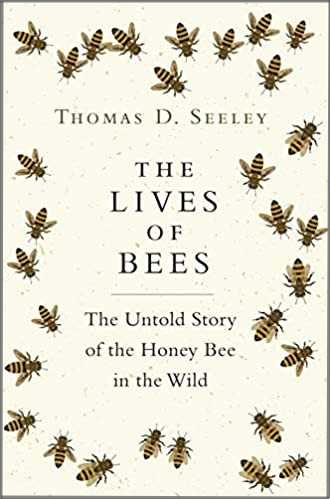American Foulbrood
As a beekeeper, American Foulbrood is one of the diseases you need to be aware of, so that you can take action quickly.
Here we look at what American Foulbrood is, the symptoms, treatment and prevention, as well as some scientific research on the topic.
What is Amercian Foulbrood?
American Foulbrood is a notifiable disease caused by the spores of bacteria Paenibacillus larvae.
It affects the brood of honey bees.
It is highly infectious.
Honey bee larvae become
infected when they ingest the spores in their food.
The younger the honey bee larvae, the more vulnerable they are to infection, with larvae less than 24 hours old being most vulnerable.
The bacteria spores germinate in the gut of the honey bee larvae, and the larvae will then usually die in their cells, and these dead larvae may contain 100 million spores.
Signs and Symptoms of American Foulbrood
Signs and symptoms of AFB include:
- Cell caps appear darker, sunken and possibly perforated
- Uneven or 'Pepper-pot' brood pattern
- Sticky larvae remains
- Dark ‘scales’ on cells.
Treatment and Prevention
- Preventing foulbrood starts with good husbandry to ensure any disease
is noticed and dealt with promptly before it spreads to other colonies.
- Be very, very careful if purchasing used
beekeeping equipment.
- Never leave combs or honey exposed to robbing bees.
- Because this disease is highly infectious, infected hives, adult bees, hive
products, frames and stock must unfortunately be destroyed to reduce the risk
of infection. Tools, gloves, honey can all carry infection. All equipment should be sterilized by
scorching.
- The most common method of transmission
from infected hive to healthy hive is the beekeeper.
- Note: spores can remain dormant for many
years in comb and honey.
Scientific Research and Natural Bee Defenses to American Foulbrood
Do honey bees themselves have the answers?
After just a short search, I found one paper that considers that honey and royal jelly may have a role in building natural bee defense against AFB, and 2 research papers found that propolis high in Tylosin and terramycin, could be effective against
American Foulbrood:
Esther Margarida A.F. Bastos, Michael Simone, Daniela Macedo Jorge, Ademilson Espencer Egea Soares, Marla Spivak : In vitro study of the antimicrobial activity of Brazilian propolis Against Paenibacillus larvae: Journal of Invertebrate Pathology 97 (2008) 273–281.
“The propolis extracts from the various states of Brazil showed significant inhibition of
P. larvae. Clear dose responses were found for individual propolis extracts, particularly between the concentrations of 1.7 and 0.12 mg propolis/treatment disk, but the source of the propolis, rather than the concentration, may be more influential in determining overall activity. Two of the three tested antibiotics (tylosin and terramycin) exhibited a greater level of inhibition compared to most of the Brazilian samples, which could be due to the low concentrations of active compounds present in the propolis extracts. Additionally, the majority of the Brazilian propolis samples were more effective than the few collected in MN, USA”.
Kamel, A.
A., Moustafa, A. A. and Nafea, E. A. Propolis as a natural antibiotic to
control American foulbrood disease in honey bee colonies: African Journal
Of Agricultural Research, 2013.
In field trials, colonies were inoculated for 3 weeks with AFB. They extracted tylosin, 0.1, 0.05 and 0.025% ethanolic extract propolis (EEP) from Chinese and Egyptian propolis and old wax comb extract and treated the colonies, which were then fed with sugar syrup only for 3 weeks.
The authors state:
“Field assays showed that the treatment of beehives affected with AFB disease by tylosin 1% and Egyptian EEP in concentration of 0.1 and 0.05% had elimination of clinical symptoms at 100% of reduction rate”.
See the study (opens a new window).
Royal Jelly
And Honey may also hold a key to protecting honey bees against American foulbrood?
Paulus H. S. Kwakman and Sebastian A. J. Zaat. Antibacterial Components of Honey, IUBMB Life, 64(1): 48–55, January 2012:
“We recently identified the antimicrobial peptide bee defen-sin-1 in RS honey. This peptide (also known as royalisin) was previously identified in honeybee hemolymph, the insect equivalent of blood in honeybee head and thoracic glands and in royal jelly, the major food of queen bee larvae but had never been detected in honey. Bee defensin-1 has potent activity but only against Gram-positive bacteria including B. subtilis, S. aureus, and Paenibacillus larvae. The latter species is the causative agent of the devastating bee larval disease American Foulbrood. Invertebrates strongly rely on antimicrobial peptides (AMPs) as part of their innate immune system for defence against micro-organisms. In honeybees, four types of AMPs are produced in the hemolymph after experimental infection with E. coli, that is, hemenoptecin, bee defensin-1, apidaecin and the group of abaecin peptides. Each of these AMPs has a distinct spectrum of antimicrobial activity, and collectively these peptides cover all major classes of microorganisms. American foulbrood is a devastating disease that specifically affects bee larvae. Infection with P. larvae occurs via the digestive tract and results in severe mortality among larvae during the first 48 h following egg hatching. Bee defensin-1, but none of the other honey AMPs, has been identified in royal jelly and honey, the major food sources for bee larvae.”
FDA Approval of Foulbrood Treatment
In 2005, the FDA approved TYLAN Soluble for the ‘Control of American Foulbrood in Honey Bees’.
However, these are the questions I would like to have answered:
- why do some bees produce more tylosin in their propolis than others, and what could beekeepers do to help in this case?
- what is the significance of the paper by Paulus et al, i.e. can their idea be further investigated?
- instead of relying on pharmaceutical companies to make drugs for treating bees, what can beekeepers do to help ensure the bees they raise are fitter, healthier, and build up their own natural defenses against these horrible diseases?

